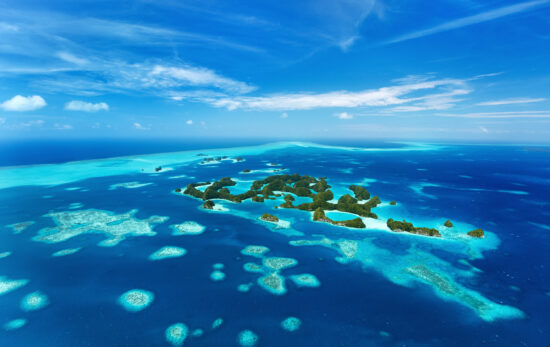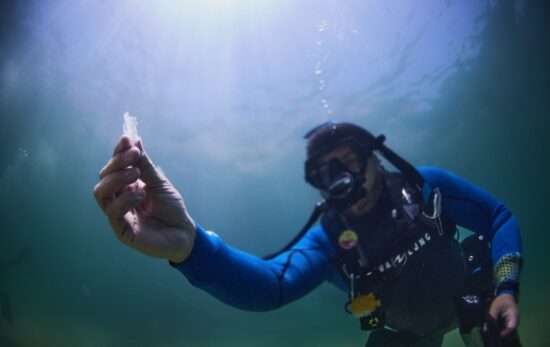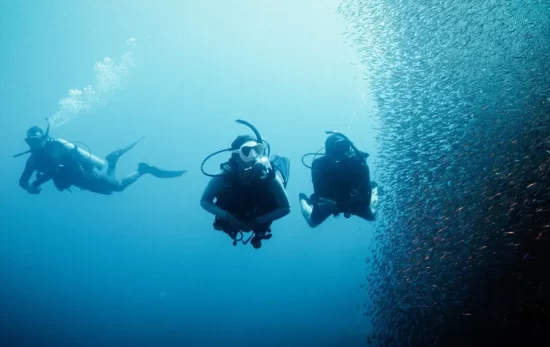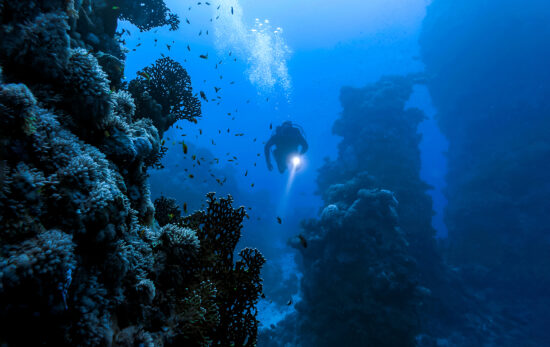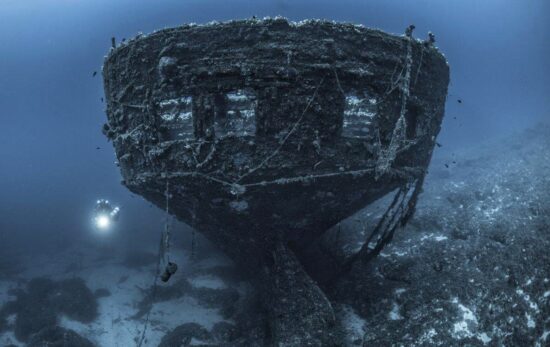Water covers over 70% of the surface of our planet, so it’s puzzling why it’s called Planet Earth and not Planet Ocean. The ocean has long inspired us with the mysterious secrets that lie beneath the surface. But it’s only recently that technology has allowed us to explore deeper, beyond the shore. Yet, one question remains ever intriguing: how deep is the ocean?
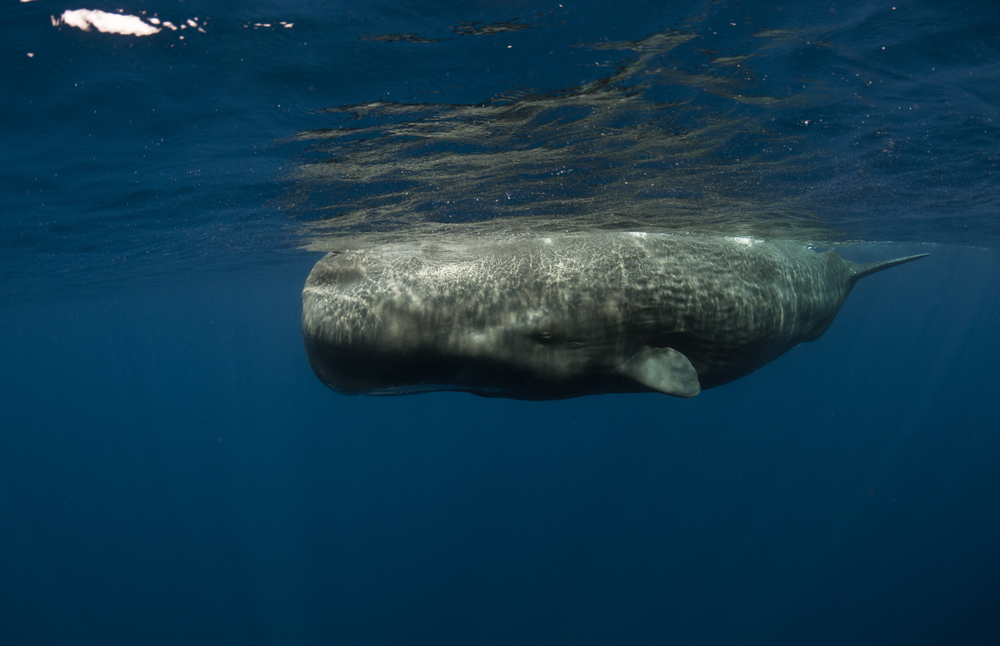
How Deep is the Ocean?
The deepest known point in the ocean is 36,201 ft (11,034m) deep. But, before looking into the specifics of this depth, we need to understand the ocean’s structure. It is not a uniform body of water. Instead, we can divide it into five distinct layers:
- The sunlight / epipelagic zone. (0 – 650ft / 200m) The top layer of the ocean has enough sunlight to support plants and abundant marine life. This is a scuba diver’s playground. It includes the rocky shores, coral reefs, and all the places we love to dive!
- The twilight / mesopelagic zone. (to 3,300ft / 1,000m) Here, the ocean starts to get darker and colder. These depths are still home to many of the species that come to the surface to feed.
- The midnight / bathypelagic zone. (to 13,100ft / 4,000m) In this pitch-black world, the only light comes from bioluminescent creatures. Remarkably, life still thrives here under these harsh conditions, although it looks very different from the surface.
- The abyss / abyssopelagic zone. (to 19,700ft / 6,000m) In this zone, far away from the land, the temperature hovers just above freezing. There are very few nutrients, and the pressure is immense. Despite this, organisms, like the anglerfish and the giant squid can call this zone home.
- The trenches / hadopelagic zone. (to 36,100ft / 11,000m) Named after Hades, the Greek god of the underworld, these zones are less common and form one of the least explored parts of our planet. They are the deepest parts of the ocean, created by the movement of tectonic plates that converge into a deep depression in the form of trenches and canyons.
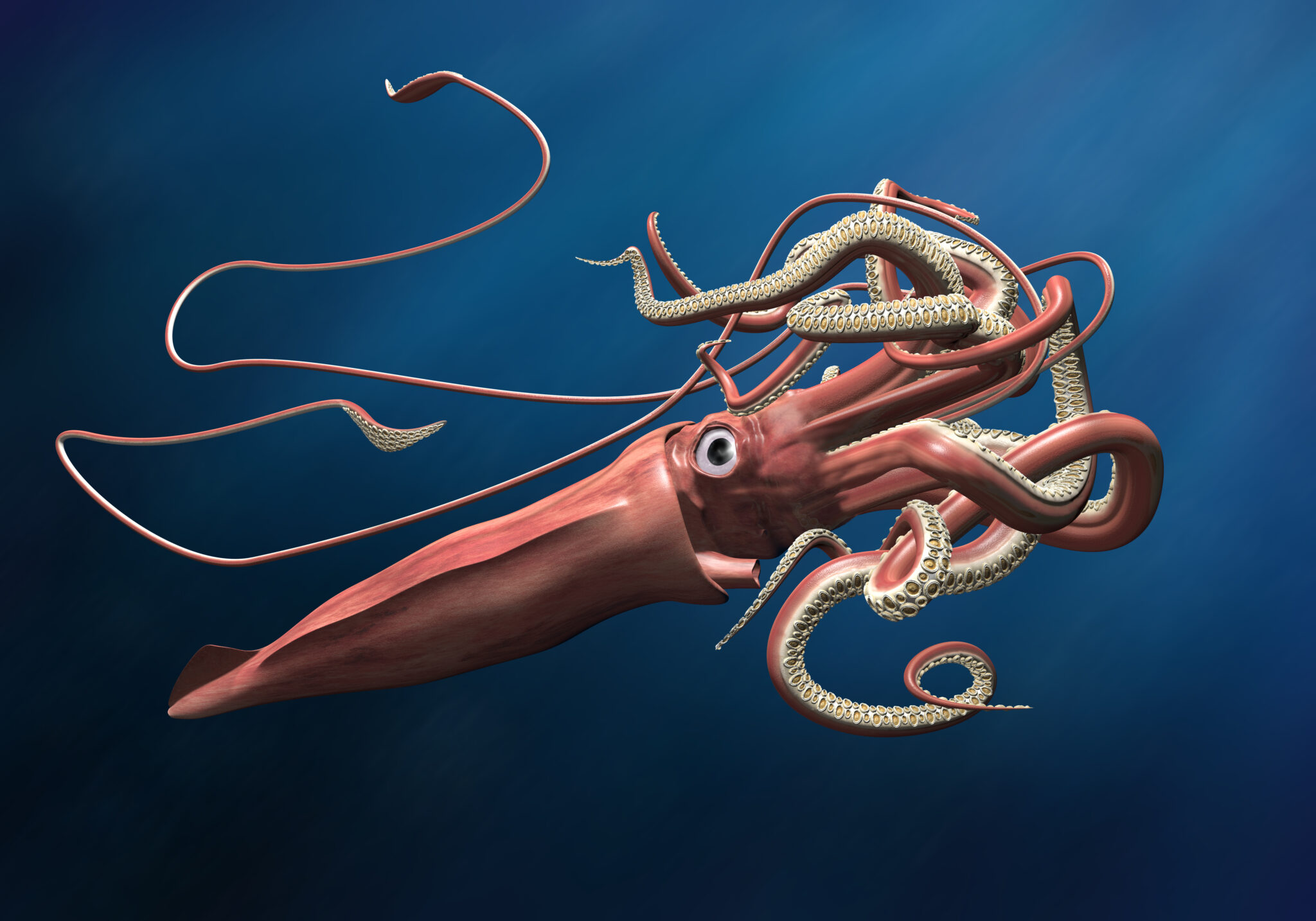
The Ocean Trenches
The deepest part of the ocean known today is in the Mariana Trench in the western Pacific Ocean between Japan and the Philippines. Its deepest point, the Challenger Deep, is named after the HMS Challenger expedition that first recorded its depth.
Although the average ocean depth is only 2.3 miles (3.7km), the Challenger Deep measures an estimated 36,201 ft (11,034m) deep, making it the deepest known point in Earth’s oceans. To put this in perspective, if you placed Mount Everest at this depth, its peak would still be submerged by over 1.3 miles (2km) of water!
Threats to the Deep Sea
We know very little about the ocean’s deepest depths; there could still be deeper trenches for us to discover. However, although it’s the most remote part of our planet, the ocean’s depths are not immune to human-made threats.
Pollution from plastic waste and chemicals, along with overfishing and a loss of biodiversity, has detrimental effects on these fragile habitats. Indeed, in 2019, Victor Vescovo, the first human to reach these depths, reported finding plastic waste at the bottom of the Challenger Deep.
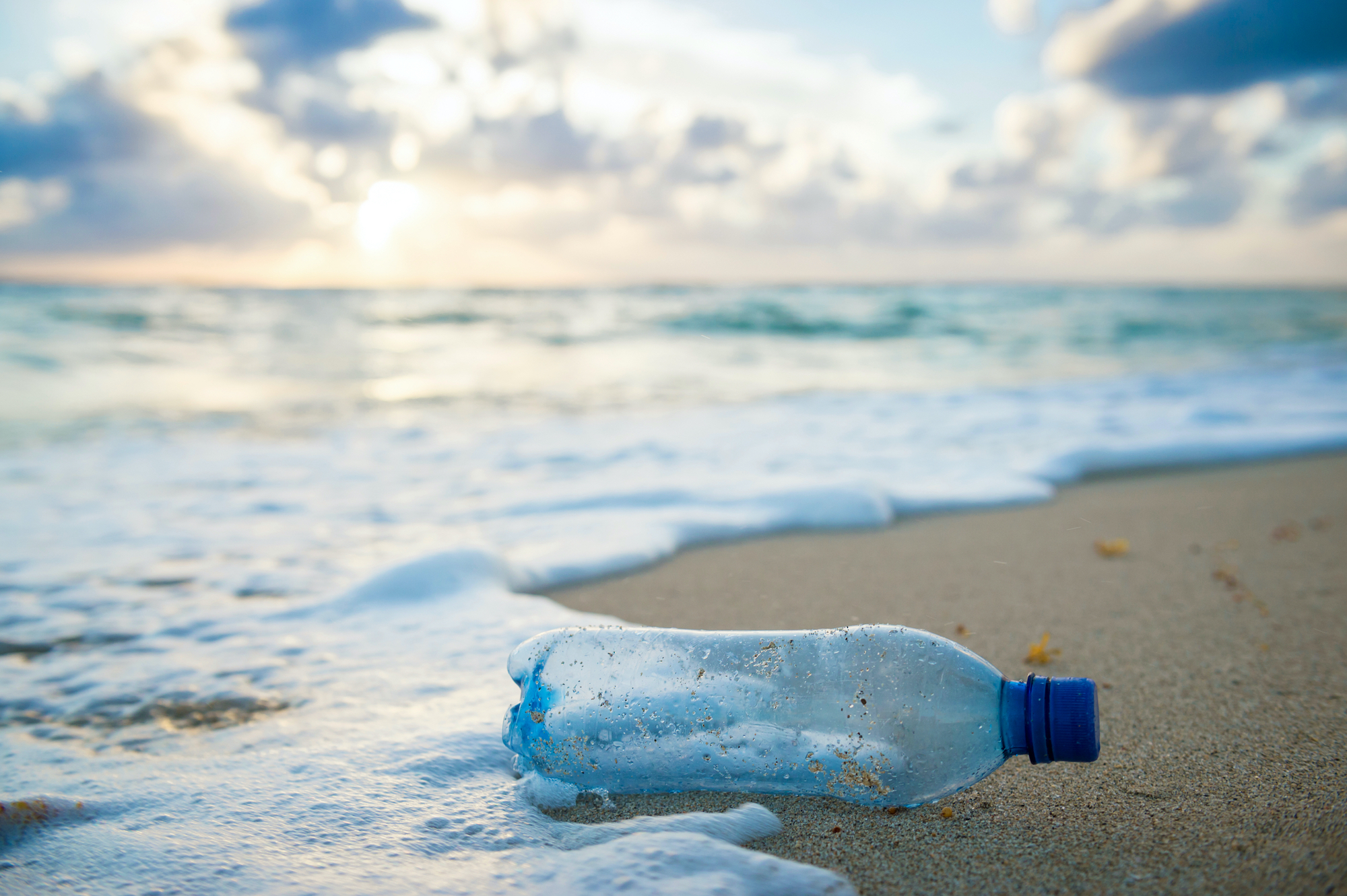
Deep Sea Exploration
Despite covering over two-thirds of our planet, we’ve explored less than 5% of the world’s oceans. The ocean’s vastness and depth provide a final frontier on our planet, teeming with unexplored territories and undiscovered species.
Exploring these depths is beyond the scope of scuba diving. The human body cannot withstand the extreme pressure and cold. While submersibles and remotely operated vehicles (ROVs) have reached these depths, only a handful of people have ever descended to Challenger Deep, proving its extreme inaccessibility.
We have barely scratched the surface of what lies beneath. With each expedition, we uncover more about our planet’s mysterious depths and the creatures that live there.
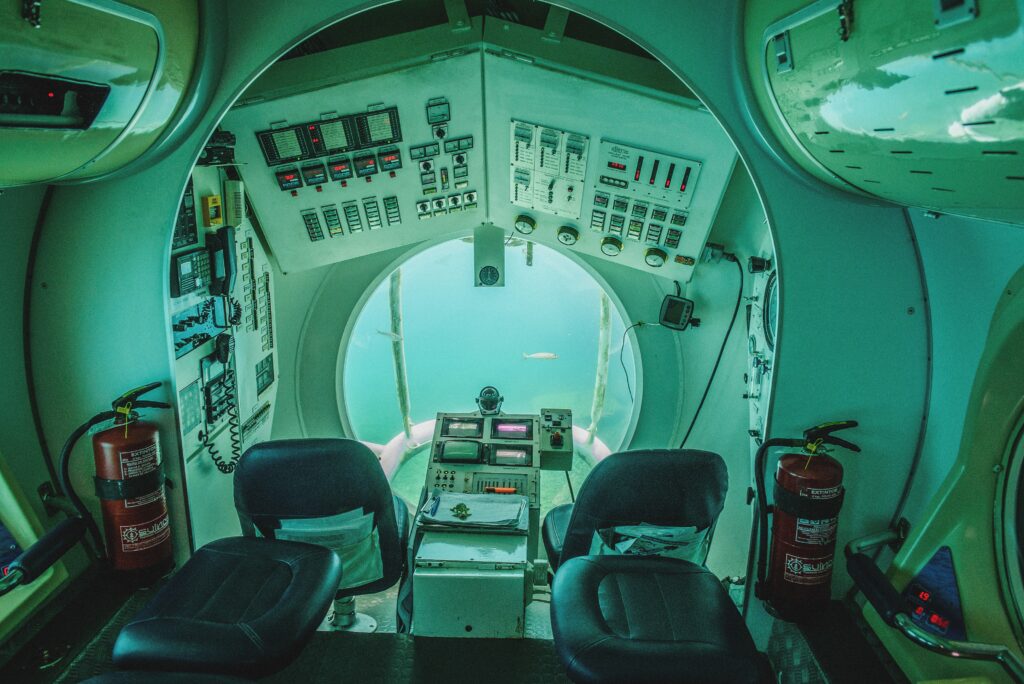
As scuba divers, we get a glimpse of this remarkable underwater world. We might not be able to descend to the greatest depths, but every dive brings us closer to understanding the ocean’s mysteries. Next time you’re floating above a coral reef or marveling at a school of fish, take a moment to consider the incredible depth beneath you. It’s a humbling reminder of our small yet significant role in our planet’s vast, interconnected ecosystem.
One thing is sure: the ocean, with its unfathomable depths, will always captivate and inspire us.
Want to explore the ocean’s depths?
Recreational diving is not going to take you anywhere near the deepest parts of the ocean, but it will open the door to many new underwater adventures! Become a PADI Open Water Diver to take you down a little further.

